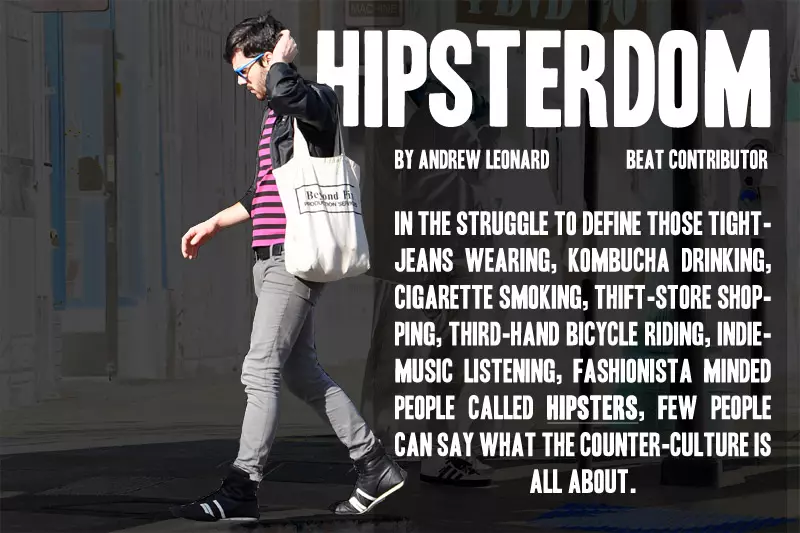
If you’re from Seattle, Portland, New York, Boston, or San Francisco, odds run high that you’ve heard the term ‘hipster’ used in street vernacular.
You cannot go a single day watching TV or walking through our nation’s big cities without seeing a hipster — or a hipster imitation — around town.
Not to be a killjoy, but I couldn’t seem to figure out what the definition of a “hipster” really is.
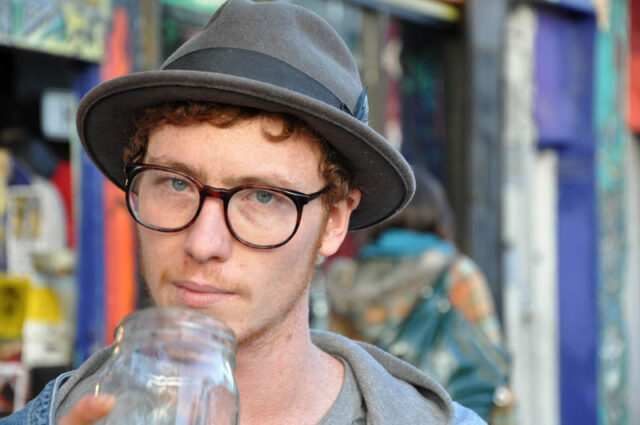
“Hip” Fashionistas?
You can classify someone as a hipster by the way they dress, the people they hang out with, or the attitude they take toward life.
Most people find it easiest to label someone a hipster based on what they wear. You know, the dude(ette) who dons thick-rim glasses, tight jeans, ironic thrift shop t-shirts, and an iPhone? Lucky you didn’t see them carrying a jar of homemade Kombucha, as well – or a pack of cigarettes for that matter.
I met Caitlin Fate of Marin County at Thrift Town along busy Mission Street near 16th Street in San Francisco as she perused the aisles in search of vintage clothing.
Formerly of San Francisco, Fate visits the Mission District because it is a “multicultural epicenter.”
She said that many so-called hipsters are probably just trying to fit an image and don’t all necessarily share the hipster mindset. Even to her, hipsterdom is hard to define.
“It’s in the eye of the beholder,” she said. “It changes from person to person… I’ve heard people relate it to a hippie.”
Her friend Andrew McQueeney, also of Marin, came to Thrift Town with her. He says hipster characteristics relate most closely to indie music styles.
See how it’s hard to reach a consensus?
McQueeney regularly encounters hipsters on the street, but doesn’t consider himself a hipster.
Fate retorted, saying “that’s the thing though. I feel like if someone asks you if you’re a hipster, and someone says ‘no, I’m not a hipster!,’ it kinda means you’re a hipster.”
“I think the whole point of people buying things from places like this… is that they don’t want to be defined by any category,” she said.
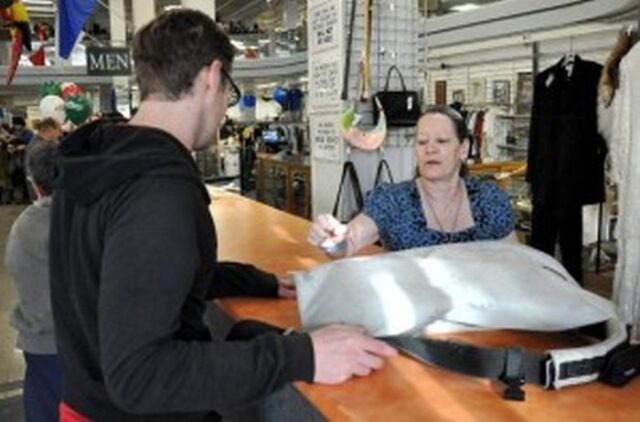
And that is how we begin to define hipster culture: a group of individuals who want to be different, but in the end form cliques because so many others strive to do the same.
Debbie Olivero is the face of Thrift Town. She works at the store as a greeter, checking bags, purses, skateboards, and backpacks at the front door.
Olivero, a middle-aged woman with a gentle face and confident smile, advocated for the sincerity of hipster ideals specifically the desire to do fashion on the cheap.
She believes that the younger crowd that shops at Thrift Town may be redefining style by taking vintage clothes and embellishing them to their own tastes.
And yet, hipster fashion has been commercialized in recent years, with the up-cropping of T-shirt stores in the Haight-Ashbury. These stores sell brand-spanking-new shirts, complete with ironic messages one could previously only hope to find in a thrift shop or their dad’s 80’s T-shirt stash. That’s when you know that a counterculture has made it mainstream.
Evolving definition
Another perplexed Mission District local who also struggles to point to a definition for “hipster” is the person whom hipsters are most likely to see when the hunger kicks in around the third or fourth stop of a bar crawl: Aaron Hall of Arinell’s Pizza on Valencia Street.
Still, after serving hundreds of people day after day – hundreds of local hipsters – the hall is still confused over what the hipster fuss is all about.
“I’m a little unclear about the definition,” he said. “It’s just changed in the five years since I’ve lived here, and it’s hard to say what the hipster culture really is.”
He did say that many of the characters he sees in his shop come in late at night. That is, we might add, after they’ve consumed their budget 12-pack of Pabst Blue Ribbon or enjoyed the gravel patio at the Mission’s very own Zeitgeist.
Back on Mission Street, shop employees were a bit more blunt about the hipster culture in San Francisco.
Adam Smith, a proprietor of Danah Enterprises, a cozy head shop, shares a similar story about his clientele.
He said that the most interesting groups of people who stop by are the same ones that come in late. He made reference to the diversity of the Mission, describing some of the folks that wander down from 16th street (a notoriously sketchy part of the district).
“They’re crackheads,” he said. “Here they have a lot of she-males, but I like it in San Francisco. I’m here because my cousin is here and the weather is good.”
Smith’s business is doing well, but not thriving like it would have in his native Big Apple, he told me.
Hipster breeding ground
This dense, urban neighborhood, despite its downfalls, is an excellent breeding ground for any twenty-something looking to live on the cheap and meet a bunch of people – if they can get into the hipster social circle, that is.
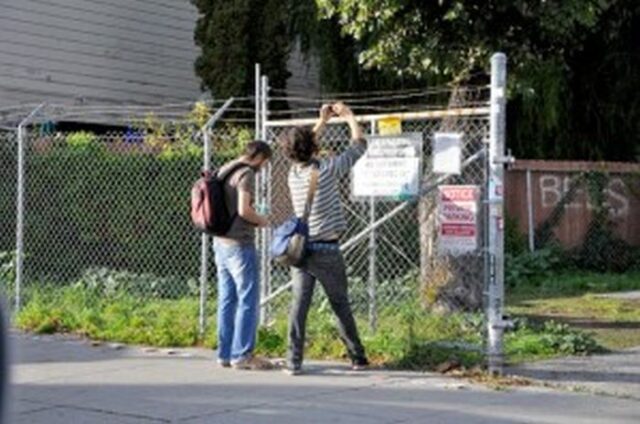
People in a larger city are at a greater liberty to be choosier about whom they choose to hang out with.
In general, a hipster’s attitude can be described as faux apathetic, someone who wants to be unique but swims in a sea among many other counter-culture individuals. The hip circle seems to be fairly impenetrable, but not explicitly so.
I was never told to go away when approaching the crowd, but it was clear we were intruding on whatever it is that hipsters do.
Hipsters, however we define them, have likely brought money into the Mission, helping keep afloat any number of dive bars, cafes, and excellent burrito shops. While high class doesn’t run amuck in the Mission, life is, well… lively.
Old hipsterdom
Nate Masse, 22, works in the Haight-Ashbury neighborhood but lives in the Mission, his preferred neighborhood.
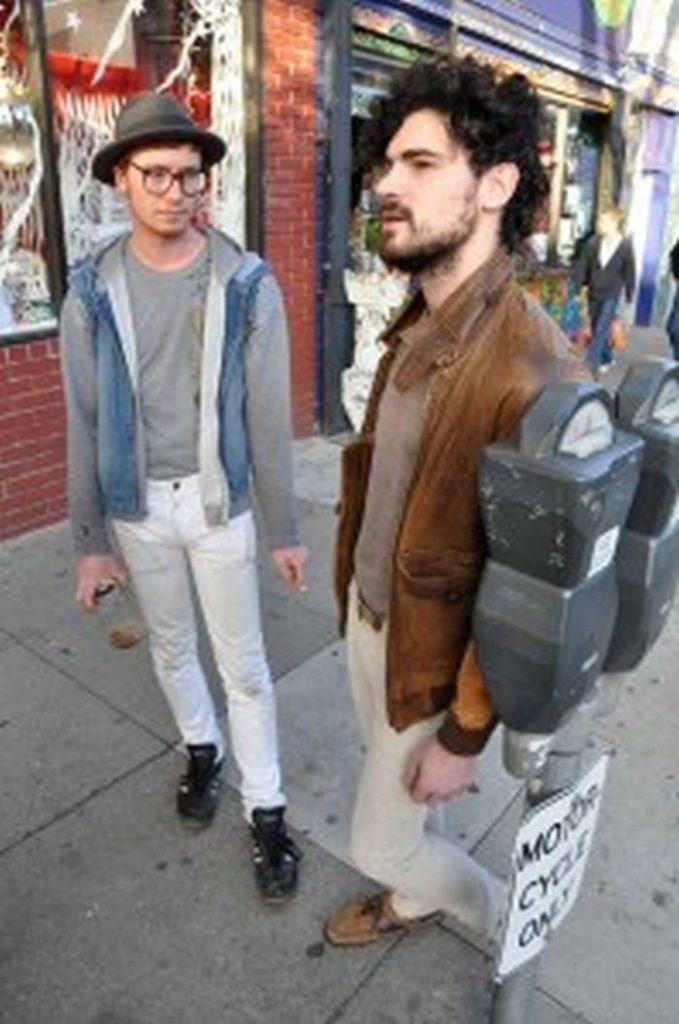
Masse said that the Haight-Ashbury has seen a lot of gentrification in recent years and that the panhandlers have become savvy of this recently found wealth. He, who appeared to be one of San Francisco’s most stereotypical hipsters, said that hipsters and punks distinguish themselves readily in their behavior, but aren’t necessarily easy to tell apart in a crowd.
Paul Marti, an owner of Haight-Ashbury T-Shirts, said that in his 30+ years selling shirts in the heart of the neighborhood, things have calmed down a bit. He said the neighborhood is not rough around the edges like it used to be.
Since 2007, it seems like the culture itself has waned, a possible blip on the radar of a decade riddled with some of the world’s most bizarre conflicts and culture mash-ups.
I did notice something interesting happen, though.
Hipsters themselves seemed to remain relatively stable in the midst of a bad recession. Some have office jobs in the financial district, and some tend the neighborhoods’ crêperies. However, they have maintained a seemingly low-budget lifestyle, iPhone data plans aside.
Still, none of this gets at the root sentiments of hipsters. We know they’re a group of individuals who strive to go against modern fashion and have hang-ups about self-identification, but what is their motivation? We never did find out.
Many young hipsters have parents to fall back on in case times get rough.
I once heard hippies described in a similar way, whereas the more unkempt a hippie appeared, the more money they came from. The same could be said here.
If you can afford to be a hipster in all its modernized glory, you may come out of the mix looking even more hipster-esque than those who shop at Thrift Town.
The culture in its passive-aggressive apathy appears to be rebellious, but to what end? If hipsterdom is a fleeting trend, its definition is going to be that much harder to nail down.
To wit: Too good for a label but too cheap for cable.
E-mail Andrew Leonard at aleonard@californiabeat.org.









